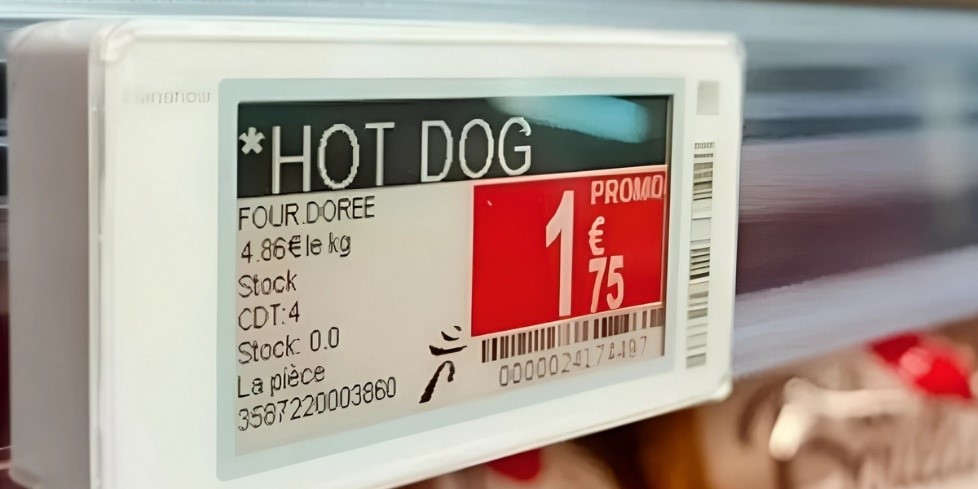Tourism is often mentioned when we talk about revenue management. Whether we’re talking about accommodation, transport, theme parks, etc., they have all the attributes needed for revenue management: a fixed and perishable stock, segmentation, fluctuating demand and marked seasonality.
The worlds of Retail and mass distribution are somewhat different. We have variable stock – we can order extra stock if there is not enough sun cream left to cover the summer – and less perishable products – shampoo that is not sold today may be sold tomorrow, or even in several months’ time.
On the other hand, demand fluctuates and peak periods are predictable: on Saturdays or at the end of the day, there are more people, and sometimes that’s the only time you can find to do your shopping. As a result, stock runs out more quickly, restocking is more complex or slower, and variable costs are higher (more staff are needed at the checkout and on the shelves than on a Tuesday morning when attendance is still low).
Should we take advantage of this to change prices as well? Should we make households pay more for their fruit juice in the evening for the next morning, because they have no choice but to do what everyone else does? Should we reward those who organise their shopping outside rush hour?
Retail: product obsolescence and seasonality
Well, not quite. Firstly, retail is somewhat different from mass distribution.
On the retail side, stock is even less perishable. Unlike yoghurt, there’s no risk of a fan going out of date, it’s only chance of losing its place on the shelf is if a new model comes out to overshadow it. This product « obsolescence » – because a new, more advanced, more technological, more trendy range is coming out – is also often the starting point for destocking operations where products that have « expired » with time are found.
Moreover, although they are less perishable, their appeal is likely to be very different depending on the time of year – there is a seasonal effect on a fan or a swimming costume. We’re more likely to see people buying these types of products before the summer, rather than in the middle of winter, when pellets set sales on fire, and wood-burning stoves are also popular.
The challenge for professionals is to identify periods of low demand and to sell off their stock before these periods, so that they can replace it with other products on the shelves. Otherwise, they will be paying for storage space until their time comes again, and before the definitive end of the product’s life cycle (we will surely stop selling this T-shirt after a few years of collection).
The notion of « how much is my customer prepared to pay for this product right now » is being exploited more and more. Some retailers have understood this so well that they are increasing their prices before the summer – or winter, depending on the product – and even just before Christmas, the clever ones.
Large-scale distribution: constraints and dynamic pricing
So what does this mean for supermarkets?
The idea behind revenue management, and more specifically dynamic pricing – let’s focus on this lever – is to identify the constraint. As we said earlier, the constraint in a supermarket is the time slot, with customers flocking in at 7pm before closing time. But the constraint doesn’t stop there, you also have to think about the costs of production, shelving, restocking, etc. Especially as storage capacity is limited, so you have to sell before you can restock and sell again.
So it’s not just a question of changing prices at peak times, but also of taking into account all aspects of constraint – in particular shelving and storage capacity – to optimise store revenues.
Technology is the key. Much to the chagrin of some hardliners, the paper label will soon be a thing of the past! At least for those who want to optimise. Welcome to electronic labels. In place for several years now, they make price changes easier, and can even be controlled remotely, in real time, to the delight of our pricers. This means that prices can be changed to reflect real-time footfall in the shop, and even current stock levels. Ah, technology works miracles…
Our British friends have understood this, and use this technique to avoid wasting food. When products are no longer fresh, discounts are applied to sell fruit and vegetables or meat before they have to be thrown away. When it comes to waste and logistics, it’s a winning combination.
Retailers can therefore use real-time data on buying trends to automatically adjust product prices in line with demand. If a product is selling slowly, price discounts can be used to stimulate sales, while if a product is in high demand, the price can be increased to maximise profits. These adjustments can be made dynamically throughout the day, depending on factors such as the time of day or the day of the week, and even the weather (aren’t you prepared to pay 10% more for a pot of ice cream in the middle of a heatwave?).
Does that seem unfair? Not necessarily. For the consumer, it also means competitive and fair prices, because prices can be reduced for products in low demand – you’ll finally be able to treat yourself to that chocolate mousse you’ve been eyeing for 2 days. In addition, with pricing that depends on demand, consumers are directed to other days of the week or time slots, and we can take advantage of lower crowds and a more pleasant shopping experience.
The Casino company, which had led the way, backed down because it lacked the right strategy (raising all prices by 30% on Sundays did not have the desired effect, due to the seasonal price structure rather than dynamic pricing). If a recent TF1 study is to be believed, the Monoprix group has taken the issue in hand.
As technology continues to evolve, it is likely that electronic labels will play an increasingly important role in the revenue management strategy of supermarkets in the future.
Keywords: Revenue Management, Yield Management, Pricing, Supermarket Pricing, implementation of dynamic pricing in supermarkets, connected electronic labels, shopping experience, Casino, Monoprix.



